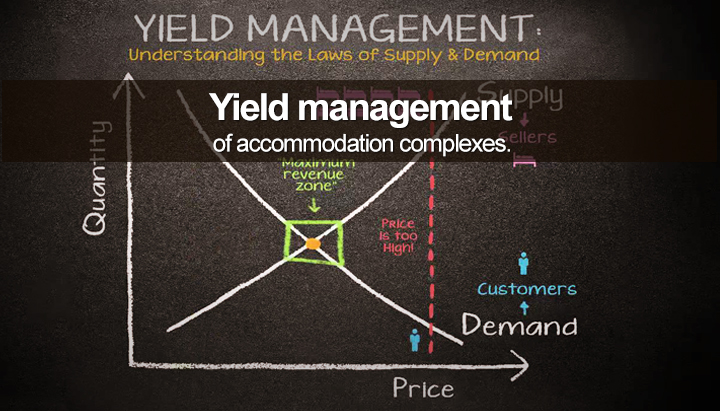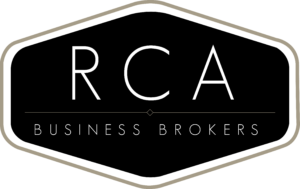
YIELD MANAGEMENT OF ACCOMMODATION COMPLEXES
16/10/2017 by Rod Askew – RCA Business Brokers
Yield Management, (also known as revenue management), attempts to gain an understanding of market conditions in order to anticipate and react to consumer behaviour in order to maximise revenue.
The case for yield management is strongest when you consider the options available to an accommodation manager. Marketing is often referred to as the 4 P’s : Price, Place, Promotion and Product. Due to the fixed nature of a property (place) once it is built then you are stuck with that location. The product itself is also hard to change without major re-investment, so the product itself is relatively fixed. This leaves the main weapons as price and promotion, and of course they are linked.
Simply put Yield Management is the process by which people maximise the return of the hotel for the owners. Yield management is no different when the property is strata titled.
It is effectively achieving the right blend of tariffs for the various guests whilst maximising occupancy.
What this means, is using marketers, wholesalers, and other channels to fill the rooms, and have a scale of tariffs for each category of users.
Rate Structures
Here is a simplified practical example from a typical 5 star hotel on how they structure their rates.
1. The cheapest rates go to a bulk room client who provides regular business. This may be a flight crew, or coach travel companies, bus drivers and staff. The discount from the maximum or rack rate may be one-third of the going full price. However, they provide regular base of business, throughput and potentially lock in some of their associated travellers at leisure rates.
2. Bulk Volume: International Wholesale Clients may range depending on the season, but typically they are looking at slightly less than half rack rate. This permits them to mark up the rates in order to pay commission to their supply chain. Remember just because you are selling the room/apartment for a relatively low nightly rate, does not mean that the guest is paying a low price. They will in fact be paying something nearer to rack rate in many cases
3. Domestic Leisure – Airline Packages: This tends to be better paying business, but it is difficult to obtain a strong volume of work. It all takes time, be prepared to grow this segment over many years.
4.International Leisure (Fully Independent Traveller -FIT): Prepared to spend, want their independence, this category of client are looking for value. Location is important, not so price sensitive.
5. Contracted Business Rates: Regular corporate clients are a great segment especially for apartment hotels as they may have family travelling with them. They often stay for longer periods and have a high tendency for regular repeat business. Lock them in with agreed numbers of annual room nights in return for benefits. Often the company is paying so little extras such as newspaper, real coffee etc are more important than just a discount rate.
6. Business Rates: same as above, but often on a more irregular basis, or new clients.
7. Rack Rate: Full Price, set high for maximum yield opportunities.
What the above chart demonstrates is how the guest base of the hotel does vary throughout the year, and hence packaging and deals need to be offered in quieter times, and less discounting should occur in the busier times. Do not associate yield management with tactical price reductions. That is only part of the equation. The other half is of course, price maximisation. Yield management delivers a strategy and rate integrity upon which suppliers can find the opportunity to charge full price for their services. This is the path that leads to increased profitability.
In the 1980s the airline industry pioneered the concept of highly variable seat ticket pricing in order to maximize returns. Apart from being in the tourism industry, they share the time sensitivity of a property – an empty seat on a departed flight can never be resold.
When do I drop my rates?
To the usual question of when should I drop my rate? it is best summarised as follows: “It’s a common belief that reducing one’s rate will radically improve occupancy. Don’t we all wish this were true? It would sure make hotel marketing an easier job. The fact is that reducing rates does not generate new demand; never has and probably never will. The usual result is to get the same or only slightly more business at lower rates; most often not enough business to offset the new lower rate offered.” – Neil Salerno.
Don’t Commoditise Your Product
At present many of you segment based on your properties physical attributes, and then price the rate accordingly. Each property has its own characteristics.
A room is not a room. Just because one guest is paying a discounted rate, does not automatically mean that everyone should get a discount. A planned approach to tariffs, guest selection and marketing, but will provide better returns.
There is a trend towards apartments away from “4 square walls” for longer stay travellers. Families are travelling on Business trips more. Studies have shown that female business travellers value security and apartments that have a homely feel.
Price the room/unit based on the user’s needs and expectations. Ask questions like, how long are you going to stay? rather than discount, maybe offer the higher floors for longer staying guests. Perhaps you can offer whole floor to clients and charge a premium. Maybe organise planning rooms and catering in place for some corporates.
Technology is a big deal to corporates so ensure the building has internet capabilities.
Strategies for Success
The most common mistake I see with on-site managers is that they have two tariffs. One being the “normal advertised rate”, and the other “drop my pants rate”. Copy the big guys and have a segmented tariff structure. Change your rate structure depending on the demand for accommodation. Do not have “one tariff fits all”.
Monitor your occupancy rate, know when to increase the tariffs, and when to increase marketing.
When times get tough, don’t cave in on your rates, increase marketing. Knee-jerk reactions and price slashing only damage your brand. If you must do it restrict it to a client class and mask it. Do not have your “A-Frame” out the front quoting “Rooms $99/night”, when your guests paid a wholesaler $185/night. Let them see your rack rate of $275/night.



